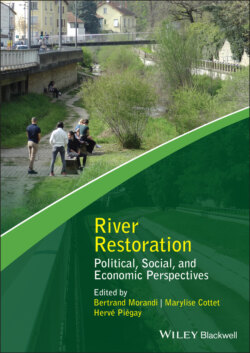Читать книгу River Restoration - Группа авторов - Страница 31
1.4.3 Economic evaluation of river restoration
ОглавлениеEconomic analyses were among the first societal approaches developed in the field of river restoration (e.g. Barendregt et al. 1992; Loomis 1996; Turner and Boyer 1997) (Figure 1.11). Several works are now widely referenced and utilized in the scientific community (Loomis et al. 2000; Chen et al. 2017; Acuña et al. 2013; Vermaat et al. 2016; Bliem et al. 2012; Gerner et al. 2018). Economic approaches focus primarily on producing an assessment of river restoration policies; however, in contrast to budgetary approaches to public policy evaluation, which are placed from the point of view of funders and primarily consider the financial costs of projects, they adopt a more socioeconomic perspective for this evaluation (Brouwer and Sheremet 2017). Thus, the majority of economic publications integrate discussions on social practices and environmental perceptions (Table 1.4). According to Brouwer and Sheremet (2017, p. 1), the economic value of a river restoration project is defined as “the calculation of all costs and benefits, including (second‐order) indirect effects on sectors and (non‐priced) environmental effects, often referred to as the broader social costs and benefits.”
Figure 1.11 A lexicon specific to international scientific publications on the economic stakes in river restoration
.
